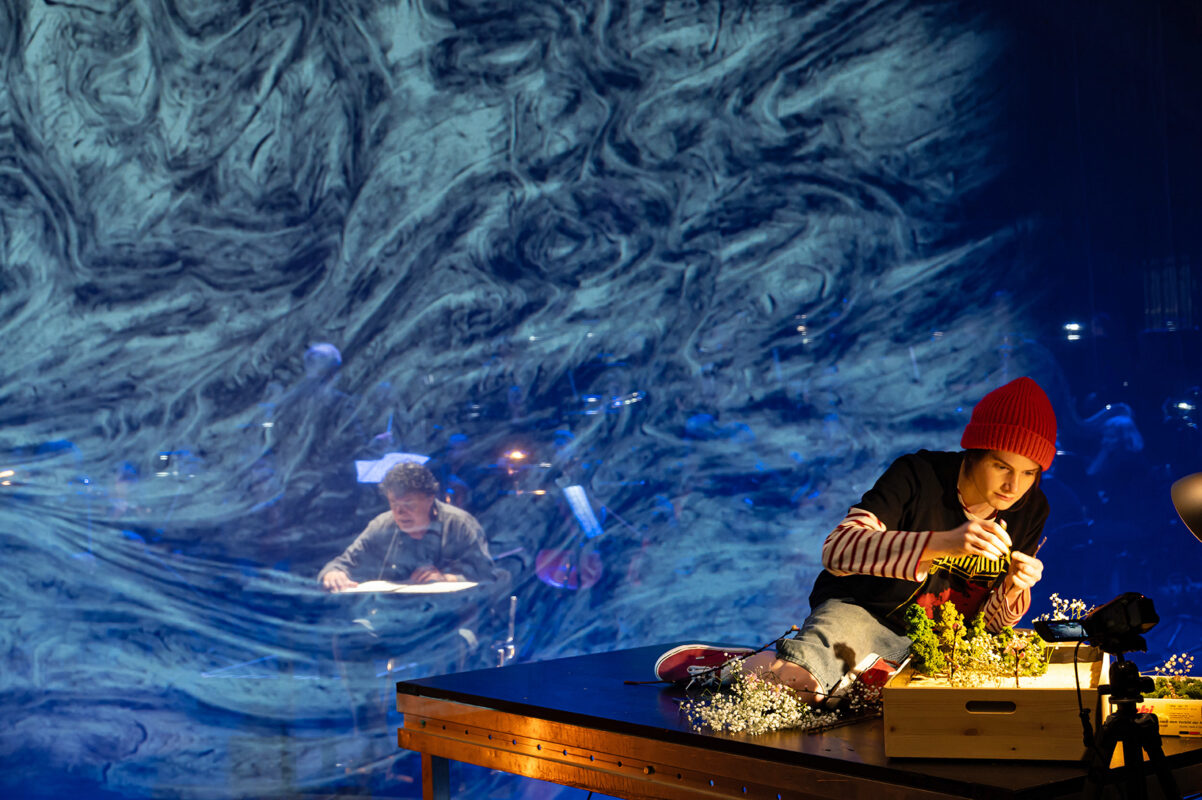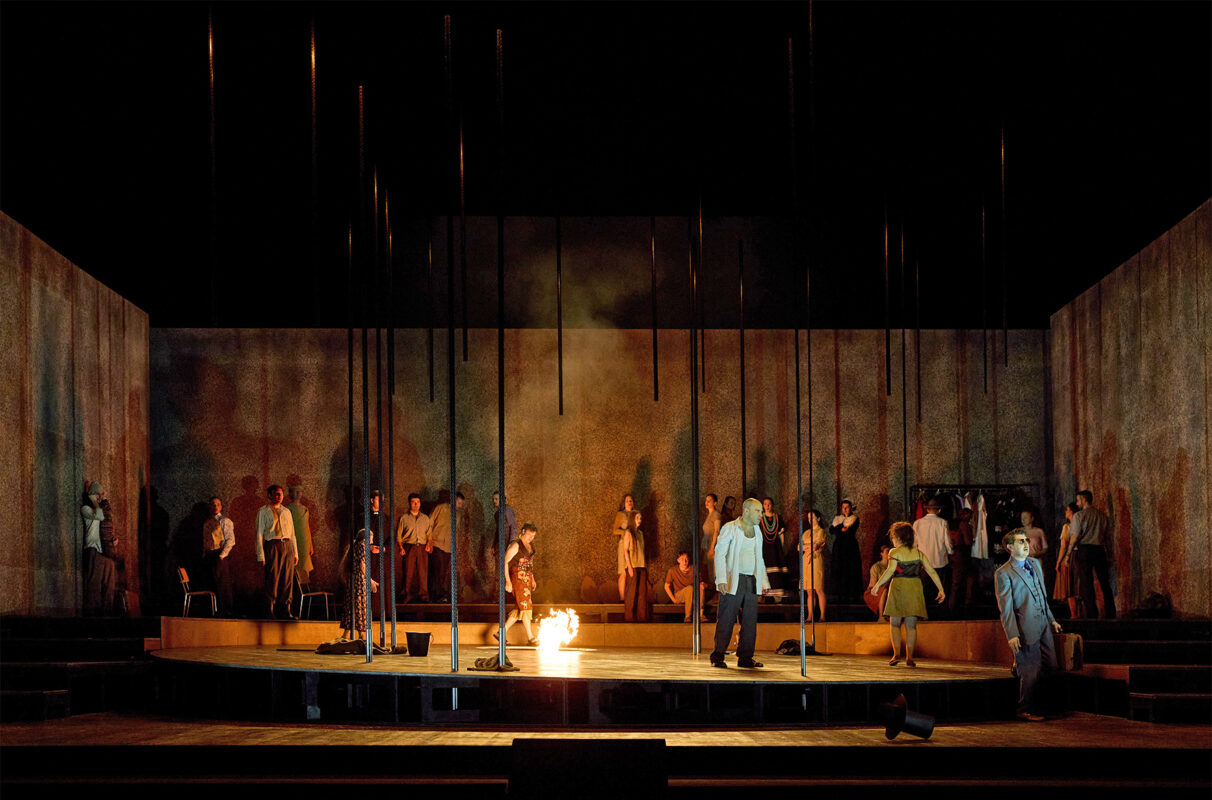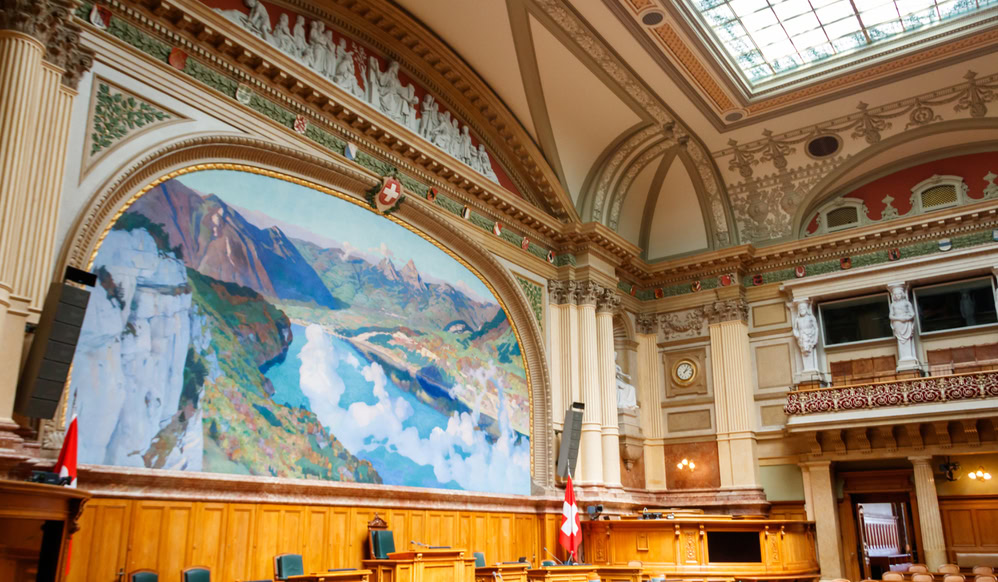On the imperial trail
The Bünder Festival Origen has been setting unusual accents in the cultural landscape for years and expanded this year with Charlemagne.
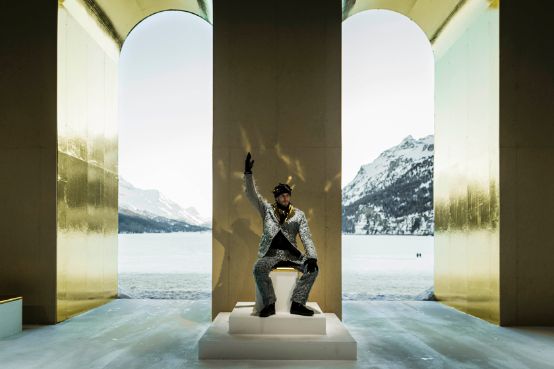
The site where Riom Castle has stood in the Oberhalbstein and Surses since the 12th century and dominates the Savognin valley basin was once the location of a royal court, which the penultimate Carolingian emperor Arnulf of Carinthia owned and then gave away. It is therefore conceivable that it had previously served the Carolingians and that Arnulf's great-great-grandfather Charlemagne once stayed at this court on a journey through his vast empire. He is said to have actually visited the region. Two valleys further on, in Münstertal, he is said to have narrowly escaped a snowstorm and founded the monastery of Müstair. And even if this is just legend, Riom and Müstair are likely to have been bases in his vast empire.
For ten years now, Riom Castle has been home to one of the most original and unique Swiss summer festivals, which manages without stars and repertoire hits and is entirely tailored to the region: "Origen" (Origin, Origin, Creation), founded and directed by Giovanni Netzer, has been attracting an enthusiastic audience since 2006 with a daring Origen program, as the themes are often taken from the Bible (Samson, Messiah, Paradise or the Flood). Smaller event cycles are grouped around a main musical-theatrical production: theater and dance productions, chants in one of the old churches, performances and radio plays in the trains of the Rhaetian Railway. Art-historical guided tours and exhibitions complete the program. There is a summer café in the Sontga Crousch house in the village of Riom, and the barn next door is currently being renovated so that performances can also take place in winter in future, as Origen is expanding and wants to extend its operations.
As central as the castle is: Time and again, the festival leaves Riom and seeks out other unusual locations for the theater performances: Solomon and the Queen of Sheba met high up on the Julier Pass in 2010, for example. In 2014, a stage was also set up for Noah and his ark on the dam wall of Marmorera, in a place where an entire village sank into the reservoir sixty years ago to generate energy. Another time, the festival made a guest appearance at Zurich main station. Origen works with what it finds on site, as only the Rümlingen New Music Festival does. And just as he transfers biblical stories to Graubünden, Netzer changes them further, enriches them with variations from other sources, lets his imagination run wild - in order to extract a dramatic core. In recent years, he has in any case begun to rework the themes several times. Each time, they are also expanded into comedy: the small cast of "Commedia", consisting of former students of the (Clown) Scuola Dimitri, travels through the countryside with a traveling stage and plays in the villages. This year, they took on an old Zurich legend of Charlemagne with a brilliantly cheeky version, as Charlemagne was the focus of the festival in the 1200th anniversary year of his death.
-
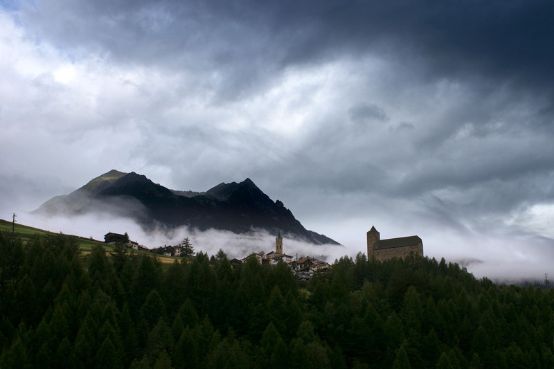
- Benjamin Hofer
- Riom with castle
Origen once again expanded in terms of space and time. Most of the events took place during the summer months in Riom and the surrounding area. However, the festival opened at the end of March in the Upper Engadine on frozen Lake Silvaplana. The golden cuboid of the temporarily rebuilt "Festspielhaus" shone in the white snowy landscape, illuminated by the evening sun. The audience sat in the warmth on ascending rows of seats, with the stage in front of them, looking out into the snow from where the dancers performed. The story was about Karl, the "King in the Snow", who gets lost in a snowstorm, arrives with his wife and children in the realm of the Prince of the Dead and is confronted there with his past misdeeds, the murder of his brother Karlmann and his family. This fictional story is certainly only based on conjecture and not on historically proven facts, but it gave Giovanni Netzer the opportunity to explore some of his main motifs: Domination, conflict and violence. The dark side of power becomes visible, as Charlemagne rarely appears in all these productions only as the glorious emperor, but above all as a wild and cruel, power-hungry upstart.
The story was told in the snow without words, only through dance and with electronic music by Lorenz Dangel. The landscape provided an impressive backdrop, but it would have been too superficial if the production had relied on this alone. This performance reached deeper, into the existential, and went to the heart of the matter. This was revealed on several levels. Because of the cold, the dancers were unable to move in the usual way. They wore heavy shoes and were wrapped in thick robes. Nevertheless, the virtuosity of their gestures unfolded. This gave the dance a new intensity, the bodies wrestled with each other and sometimes did not let go of each other. It had an oppressive effect. We almost breathed a sigh of relief when Karl and his family were released back into life at the end.
-
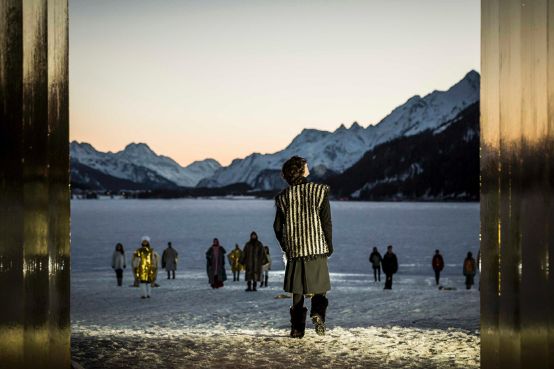
- Benjamin Hofer
- "King in the snow"
Origen almost always presents a kind of sacred music theater, not only in terms of its themes, but also in terms of its form, which derives less from opera than from a mystery play or a staged oratorio. This is as unique and fascinating as it may seem strange at first: certainly not a typical program for summer visitors. Giovanni Netzer has moved away from dramatic singing. He usually focuses on dance and the movement of the bodies, with music from a computer or sung by a vocal ensemble. This can become enormously charged, as in the King in the snowbut it can also lead to a liturgical performance in ritual stages, as was the case this summer with the production David was also shown at a suitable location, in Müstair near the border with South Tyrol. There - on a stage recreated from the Carolingian church next door - it was all about the coronation of Charlemagne. The latter, an actor who only appeared occasionally, remained silent; a narrator led through the chronicle. From the vocal ensemble, which performed Gregorian chants and responsories by Carlo Gesualdo in between, six soloists broke away one after the other to portray a person from the life of Charles in a new aria composed by Edward Rushton: Pope Leo III, who performs the coronation again willy-nilly, the prophet Samuel, who appeared as a kingmaker from the Old Testament; the scheming Byzantine empress Irene and her weak son Constantine, Charles's neglected wife Luitgard and a mistress of Charles. Each time, the emperor appeared in a different light - not exactly positive. The whole production was coherent; the vocal ensemble, rehearsed by Clau Scherrer, has been working at a high level for years; the magnificent costumes, created by textile designer Martin Leuthold from the St. Gallen textile company Schläpfer, are one of the attractions of the festival. And yet: this "David" (as Karl called himself at his court) remained a sequence of images that did not intensify or build up. This is in stark contrast to the dance production Emperor in the bathwhich was shown at Riom Castle. There again, a very physical, expressive dance took center stage: the life of Karl passed by, and in combination with the percussive sounds of Peter Conrad Zumthor and Lukas Niggli and the motets of Francis Poulenc, an abstract and yet very moving biography was created.
Origen's "Charlemagne Year" will conclude on September 5 and 6 at Zurich Main Station:
Requiem - requiem mass for Emperor Karl. Music by W. A. Mozart and O. Weber






